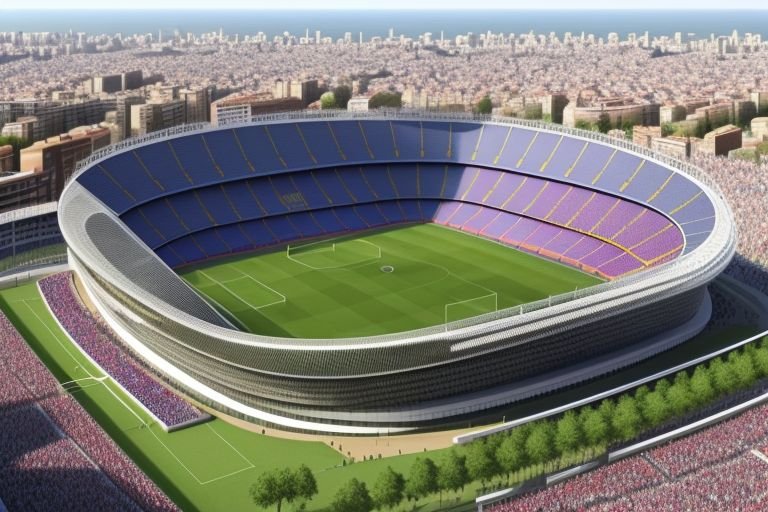
Barcelona Unveils Ambitious Camp Nou Redevelopment Plans
The launch of specific blueprints on the renovation of the great Camp Nou that fits into the history of the Barcelona Football Club is now complete. The planned next month’s large-scale renovation plan will bring Camp Nou among the most innovative and sustainability-based facilities for sports in the globe.
Club president Joan Laporta, along with chief architect Norman Foster, unveiled the official project at a press conference at the stadium. The refurbishment plan is expected to cost €1.5 billion, raising the stadium’s seating capacity to 105,000 to make it the largest football stadium in Europe.
The new design uses state-of-the-art technological applications and elements of sustainability in the city to reflect Barcelona’s environmentally friendly policy. The elastomeric coating system will have photovoltaic solar panels on the roof structure to produce adequate power for the stadium operation and other structures. A new cutting-edge rainwater harvesting system will be installed to minimize water usage.
The stadium will also be able to accommodate different kinds of events in different weather conditions due to retractable roof it is going to have. This addition is expected to increase the above revenue sources since the club will host other events other than football match.
The redevelopment proposals also entail a great enhancement of the fan experience. A circular concourse for circles thirty360-degree concourse will be provided to give an unobstructed view of the city skyline while a new design of the seating arrangements will help give every individual a perfect view of the pitch. This will give way to a doubling of the VIP boxes needed to accommodate the growing market for superior match day experiences.
Laporta emphasized the project’s importance for the club’s future, stating, “This redevelopment is not just about creating a modern stadium; it’s about securing Barcelona’s position at the forefront of world football for generations to come. The new Camp Nou will only be a symbol of our aspiration and the commitment of supporters.
Fortunately, the club has said the redevelopment process will be a progressive one and that many matches will be able to be played at the Camp Nou during construction time. Nevertheless, the team will have to use the nearby Estadi Olímpic Lluís Companys for one season while considerable construction work takes place.
Project specifics were also unveiled, with the club reaching an agreement with a number of international consortiums for long-term project funding. Laporta stressed that the redevelopment would not impact the club’s transfer budget or overall financial stability, citing projected increases in matchday revenue and commercial opportunities as key factors in the project’s viability.
The redevelopment has received widespread support from local authorities, with Barcelona’s mayor highlighting the positive impact on the city’s economy and global profile. The initiative should provide thousands of working places and stimulate the growth of tourist attractions in Barcelona, a region in Catalonia.
Other former sporting players of FC Barcelona have also come out in support of the plans. Current Al Sadd manager and former Barca star Xavi Hernandez said “The Camp Nou has always been special for me, but these plans will make the place iconic.” It’s fantastic to see the club thinking big and planning for the future.”
Prominent green organizations believe that sustainable elements have been well incorporated into the design by focusing on renewable energy, especially in their energy needs and the efficient use of water. This has seen the club agree on a challenge to ensure that the stadium operates in a carbon-neutral way within five years of construction.
The redevelopment is not immune to some forms of challenges though. A number of local people have complained of congestion and noise pollution around matches’ dates. The club has undertaken to engage with the community to fix such matters as poor infrastructure, road works and the provision of transport systems.
In addition, the transformation of the entire stadium environment, including the surrounding territories, is also planned within the framework of the project. The new museum in Barcelona is to be built and serve as the historical center of the club, also containing the major trophy cup collection. Further, it will lead to the appearance of new public spaces and green areas and make the stadium complex locally more organic from the standpoint of the urban landscape of the Les Corts neighborhood.
With the spewing out of such enormous strategies, Barcelona has laid the foundation for a new era in the history of the team. The new Camp Nou, therefore, holds the potential to become not only a home for football but an iconic and groundbreaking place that the club is today and which it grows to be. Starting construction soon, fans and football lovers all over the world are set to watch this canter evolve for the present day.


